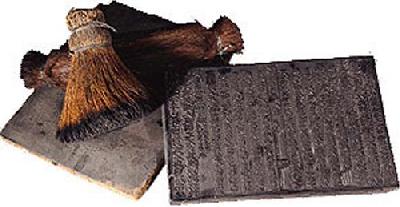
The emergence of engraving provided essential conditions for the wide spread of culture. However, due to the absence of works in the early stages, there was a mystery surrounding a work's origin and early appearance. In fact, engraving was adopted and popularized in the Tang Dynasty (618-907) since most existing printed materials of the Tang already had illustrations. This suggests that engraving characters and pictures emerged and co-existed around the same time. The earliest engraved picture of the Tang is theJingang Boreboluomi Sutra(Shuofa Tu), which was unearthed inDunhuang,GansuProvince inWest China. The scroll was well preserved, with the characters meaning "made on April 15th in the ninth year of Xiantong for my parents" inscribed on top. This Sutra is also the earliest-known engraving with a recorded date in the world. The craftwork is so exquisite and skillful that the fluttering clothes and vivid expressions of the figures are still true to life.
In cave paintings of the Old Stone Age, various handprints were also found. One was calledyangyin-- handprints pressed directly on the wall after being dipped in ink; another was achieved by pressing the palm on the wall and brushing ink over it and the wall. Hand shapes were also carved directly into the rock. Similarly, when producing pottery, primitive residents usually pressed the pottery with rope to make designs.
The emergence of the emperor's seal was also significant in Chinese engraving history because it retained the primitive meaning of engraving -- to transmit an image by using a seal as the inter-medium. In fact, images made by seals were actually small picture engravings. Among the fabrics unearthed in the Mawangdui Han tomb, one was cotton with powdered gold and silver-printed designs, which were produced by using chromatography-relief printing plates. When imprinted, certain areas were pressed excessively, but the technique was generally of a high level. The cotton sample is the earliest known chromatography relief-printing product unearthed so far. Relics related to engraving and printing, which were found in large numbers; suggest that the emergence and development of the Chinese engraving technique was inevitable.
The Sui and Tang Dynasties (581-907) saw the flourishing of Buddhism inChina. The subjects of religious woodblock prints changed quickly from traditional sorcery beliefs to Buddhism. In the Five Dynasties (907-960), although there were some illusions to history and reference books, religious prints were still dominant. However, religion lost its appeal in the Song Dynasty (360-1279). Illusion engravings began to appear in scientific and art books. Due to the popularity of landscape painting, some engravings with landscapes as their subjects also appeared.The Four BeautiesandYiyong Anwuwangof the Jin Dynasty (1115-1234) symbolized the transformation from woodblock printing from art to custom. Another important work of the Song and Jin Dynasties isDongfangshuo Stealing Peach, which was discovered in 1973 when the government ofShaanxiProvincerenovated theXitai XiaojinTablet. Printed with light ink in light green, the engraving was regarded the earliest colored-woodblock printing ever found.
Chinese engraving reached its peak in the Ming and Qing Dynasties (1368-1911). Specialized engraving institutions appeared both in the government and among the people, and schools of regional characters and personal styles emerged in some areas. After the Opium War, along with the entrance of modern foreign engraving techniques, Chinese traditional engraving was challenged. This, however, spurred the popularity of woodblock printing in rural areas where many excellent works were produced.